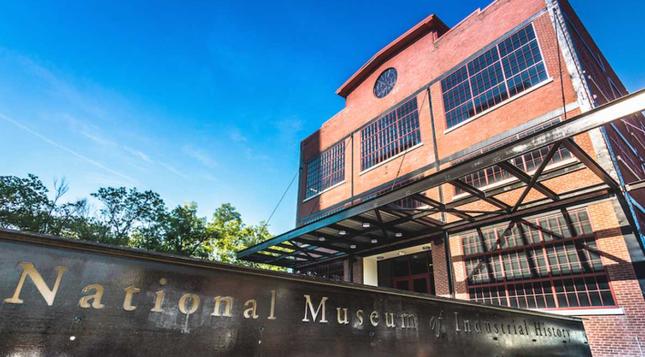Bethlehem, Pa.: A New Capital for Industrial Heritage
By • September 19, 2016 0 1532

The Aug. 2 opening of the National Museum of Industrial History makes Bethlehem, Pennsylvania, about 70 miles north of Philadelphia, the undisputed capital of America’s industrial heritage. The NMIH occupies the former Electric Repair Shop of Bethlehem Steel, a 40,000-square-foot building constructed in 1913, when the company was emerging as the nation’s second-largest steel company.
The new museum tells the story of iron and steel through a rich collection of machines, models, maps, photographs, oral histories and interactive experiences. There are displays about the people — industry leaders, visionary inventors, immigrant workers and union activists — and the process of making steel, paying tribute to the astounding productivity of mills that supplied the steel for such iconic structures as the Panama Canal, the Chrysler Building, Hoover Dam and the Golden Gate Bridge.
By 1940, nearly half the buildings in New York City’s skyline used Bethlehem steel. “The Steel,” as it was known locally, played a critical role during World War II as part of “the arsenal of democracy,” employing nearly 120,000 workers at plants in North and South America.
There is much more to see at NMIH about the industrial revolution. The museum, an affiliate of the Smithsonian Institution, exhibits an extraordinary collection of machinery from the National Museum of American History. Longtime Washingtonians may recognize some artifacts from the “1876 Centennial Exposition” exhibition on view from 1976 to 1996 in the Arts and Industries Building on the National Mall.
Other galleries are devoted to the history of silk and textile manufacturing and to the propane industry, which emerged as an energy source in the 20th century. There is something of interest for everyone — especially for families — as NMIH demonstrates how the industrial revolution transformed America and how industry continues to influence and shape the nation’s economic, social and cultural life today.
The museum is located amid the ruins and remains of a stunning industrial landscape: more than forty structures that reflect the origins, rise and decline of a once-powerful corporation. In the 1990s, the Commonwealth of Pennsylvania and local governments launched a major environmental cleanup initiative, the nation’s largest private brownfield project. In the early 2000s, a performing-arts organization called SteelStacks spearheaded the area’s revival, offering a year-round venue for concerts and festivals.
The most spectacular feature at SteelStacks is five enormous blast furnaces, each more than 200 feet high, that provide a dramatic backdrop for hundreds of events. Last year, an elevated 1,800-foot walkway opened to the public, allowing visitors a unique close-up view of these rare survivors of the industrial age. The walkway follows the route of the Hoover Mason Trestle, a railway that delivered iron ore, coke and limestone to furnaces that each produced from 800 to 3,300 tons of iron daily. This setting is not found anywhere else in America or, quite possibly, in the world.
The National Museum of Industrial History is open Wednesday through Sunday from 10 a.m. to 5 p.m. Admission is $12 for adults; $11 for seniors, veterans and students; and $9 for ages 7 to 17. Admission is free for age 6 and under.
Across the Lehigh River in downtown Bethlehem, visitors can experience early industrial history at buildings and sites maintained by the Historic Bethlehem Partnership. Many of these sites are associated with the Moravians who settled here in 1741. This remarkable collection of structures includes a tannery, a gristmill, a blacksmith shop and America’s first municipal waterworks.
The theme of industrial history — including the related topics of science and technology — continues in other Lehigh Valley cities, notably Allentown, home of the Da Vinci Science Center and America on Wheels, a transportation museum; and Easton, site of the National Canal Museum and the Crayola Experience.
Clearly, a visit to Bethlehem and the Lehigh Valley can consume at least a weekend — maybe even a long holiday weekend. The Historic Hotel Bethlehem and the Sayre Mansion Inn are two excellent places to rest as you explore and discover America’s rich industrial heritage.
*Public historian and Georgetown resident Brent D. Glass is director emeritus of the Smithsonian’s National Museum of American History.*

